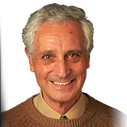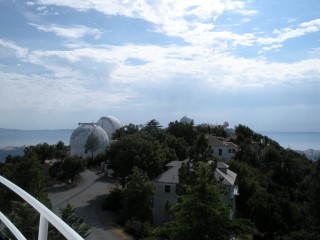Mount Wilson Telescope: Interior of the Mount Wilson Observatory Hooker telescope dome, showing the 100-inch reflector telescope, Cassegrain observing platform, etc. from the west.
Credit: University of Chicago Photographic Archive, apf6-03415, Special Collections Research Center, University of Chicago Library
After graduating in Physics in 1956, I was allowed to go on to study astronomy. Radio astronomy seemed a perfect fit, but at the time it was very much about the technology and very little about the astronomy. I was more interested in actually observing the sky and seeing images, but we didn’t have a department doing that. We did have an optics group and a theoretical group, so I persuaded them to let me work halfway between the two; I would be the first student in astrophysics rather than theoretical astrophysics.
It was an odd education, because in those days there were no courses as a graduate student; you just learned what you needed however you could. Most of what I learned, I learned by going to the library and reading the complete publications of the Mount Wilson Observatory, then trying to understand what they were doing and how they were doing it. It was not a standard learning technique, but I employed very much the same technique that I discussed earlier: You just read everything, and try putting it all together in your head.
After I got my PhD in early 1959, I went to a research observatory in Pretoria, South Africa. I went there deliberately because theirs was the observing kind of astronomy, the work that I couldn’t do before because of the cloudy skies in England and the lack of big telescopes and equipment. I spent six months at that, and then I went to Lick Observatory in California to continue my thesis work, which was to make observations of interstellar absorption lines in stars using spectral interferometry.



